7Ps of Marketing
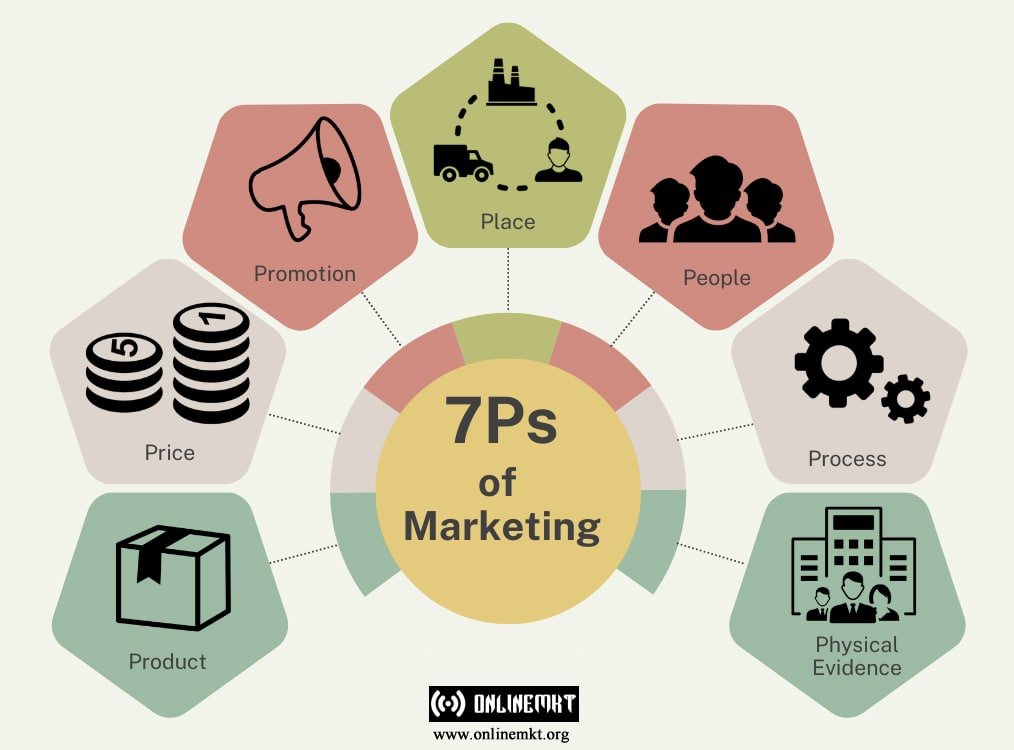
Have you ever asked yourself how a brand is instantly recognizable? Or how a product goes from unknown to suddenly become popular in market? The secret is in a strong marketing model called the 7 Ps of marketing. It is a recipe for marketing success, with each “P” being a key ingredient.
From discovering your market to crafting the perfect message, the 7 Ps are with you every step of the way. But what are the Ps and how can they transform your marketing strategy? Uncover the secrets of the 7 Ps of marketing in this blog.
Product
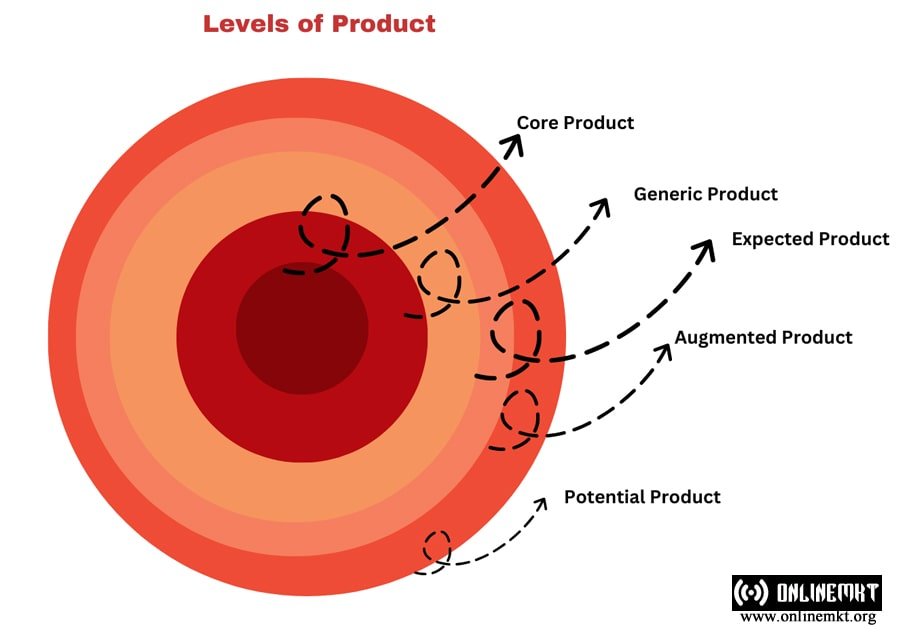
Product is anything that serves as a buyer need satisfier. This is what the company is providing, all the features, benefits, and advantages customers can derive from purchasing the goods or services
Product levels help to understand a product more than its physical presence. The understanding of different levels of a product helps marketers and companies to meet the needs of the customer effectively and construct a comprehensive product offering.
The five levels of products, which were developed by marketing expert Philip Kotler, are:
Core Benefit
The initial need or want that the product fulfills. For example, someone buying a car is not just buying wheels and metal, they are buying transportation.
Generic Product
This is the generic form of the product which provides the core benefit. Taking the car again as an example, the generic product is basically a car which transports you from point A to point B.
Expected Product
This type is the set of features and qualities that consumers usually find in a particular product category. For cars, common features might include a steering wheel, brakes, seats, and maybe air conditioning.
Augmented Product
This level has all other features and services that make a product unique from others and exceed customers’ expectations. In cars, this could be luxurious features like heated seats, a sunroof, or a navigation system. It can also have additional services like warranties, financing, or roadside assistance.
Potential Product
This is the level of future development and innovations that can be incorporated into the product. Auto makers always look for how to enhance fuel efficiency, safety features, and entertainment systems. This level is the potential for future expansion and evolution of the product.
Price
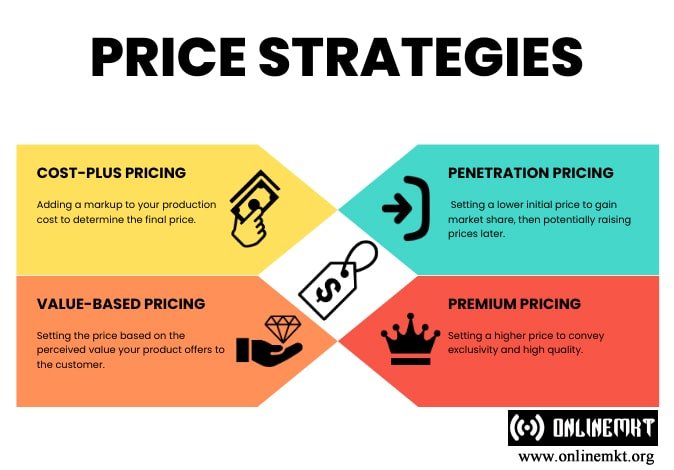
Price is how much money something or a service will cost. It is derived from a variety of factors, including the price to make it, demand and supply, competition, and customer perceived value.
Price Strategies
There are a variety of price strategies that you can use depending on your product, market, and goals. Here are some:
- Cost-Plus Pricing: Putting a markup on your production cost to obtain the price.
- Value-Based Pricing: Priced based on the perceived value your product brings to the customer.
- Penetration Pricing: Selling at a reduced introductory price to gain market share, then potentially raising prices later.
- Premium Pricing: Sells at a premium price to convey exclusivity and high quality.
Place
The place of the marketing mix is where a product or service is offered to the customer. This involves distribution channels, logistics, and any intermediaries who assist in distributing the product to the final customer.
Place Decisions
There are many things to consider when deciding where to offer your product or service:
- Distribution Channels: This is how your product gets from the production phase to the end user. It could be direct selling, wholesalers, retailers, internet stores, or some combination thereof.
- Physical Location: For retail stores, location is significant for traffic and accessibility. Target market proximity and store ambiance are factors.
- Inventory Control: The proper amount of merchandise in the proper place is needed. Proper management of inventory accomplishes sales and avoids stockout.
- Shipping and Fulfillment: Selling assembly products or selling online means consider how orders will be shipped and fulfilled. Reliable and effective delivery systems are the key to customer satisfaction.
Promotion
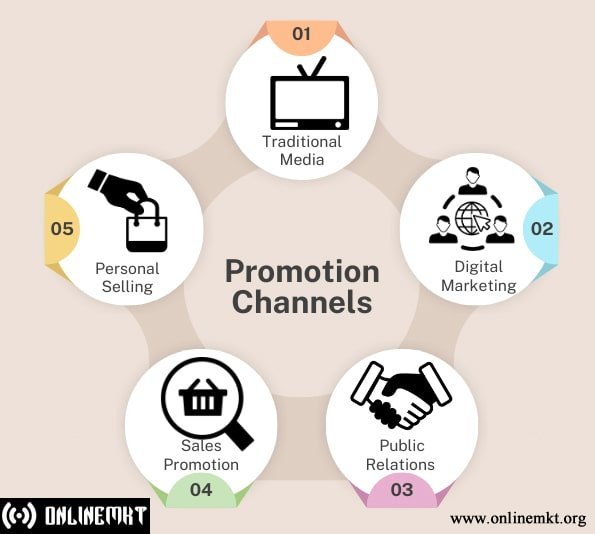
It includes every method and means used to deliver the value proposition of a service or product to potential customers and make them purchase it.
There are an incredibly large number of promotion tools and channels, online and offline. Some of the most prominent among them are stated below:
- Traditional Media: Television, radio, print media (newspaper, magazine), billboards, out-of-home media.
- Internet Marketing: Promotion through social media, search engine marketing (SEM), search engine optimization (SEO), content promotion, email promotion, influencer promotion.
- Public Relations (PR): Public announcements, publicity, events, sponsorships.
- Sales Promotion: Coupons, discounts, promotions, giveaways, loyalty programs.
- Personal Selling: Direct interaction between buyers and salesmen.
People
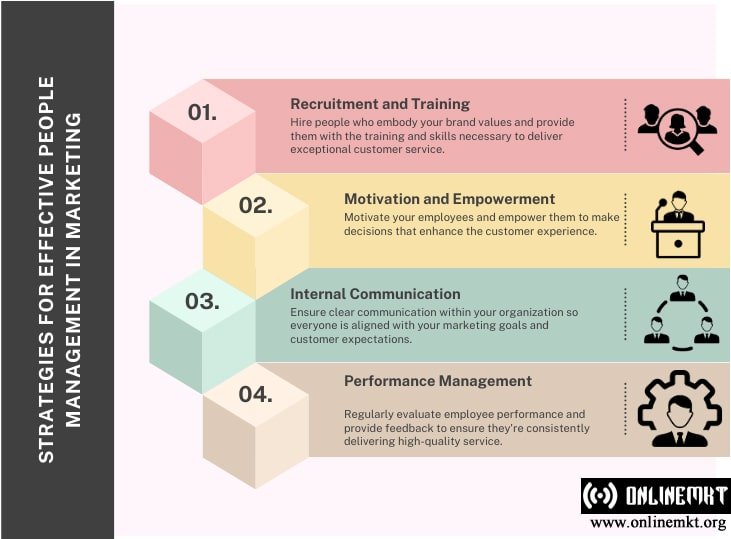
Put the right people in the job to build an extraordinary customer experience. All of them count: whether they are employees to customers, this element is about the power that exists when they are all there and share a common vision of offering a better service and building a strong brand.
Successful People Management Strategies in Marketing are:
- Recruitment and Training: Hire people who follow your brand values and provide them training and skills to deliver excellent customer service.
- Motivation and Empowerment: Encourage your employees and provide them with the power to make decisions that enhance the customer experience.
- Internal Communication: Clearly communicate within your business so that everyone is aligned with your marketing goals and customer expectations.
- Performance Management: Track employee performance on a regular basis and provide feedback to ensure they are delivering high-quality service consistently.
Process
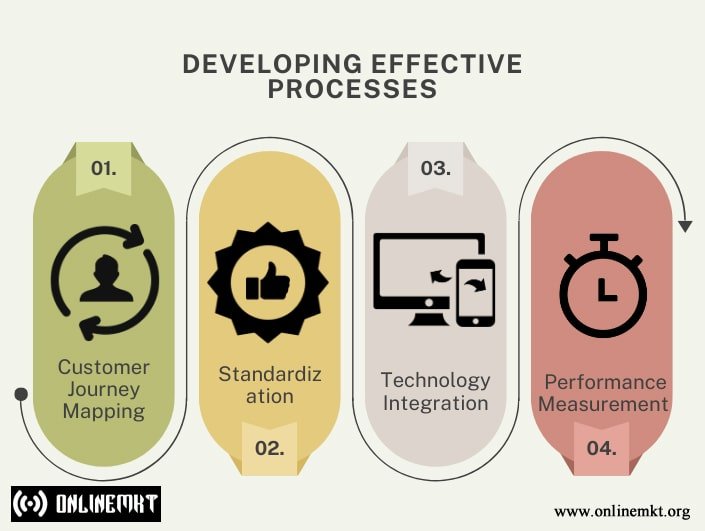
The process involves in taking the product or service to the customer. Good processes imply that the product is of high quality consistently and delivered on time. It involves such areas as order processing, delivery, and servicing after sale.
Creating Effective Processes
Customer Journey Mapping: Map out the different touchpoints a customer has with your brand and where processes can be streamlined.
Standardization: Create standardized processes for critical procedures to achieve consistency and efficiency.
Technology Integration: Make use of technology to automate work and condense work wherever applicable.
Performance Measurement: Monitor and measure your processes’ performance on a regular basis to determine areas for improvement
Physical Evidence
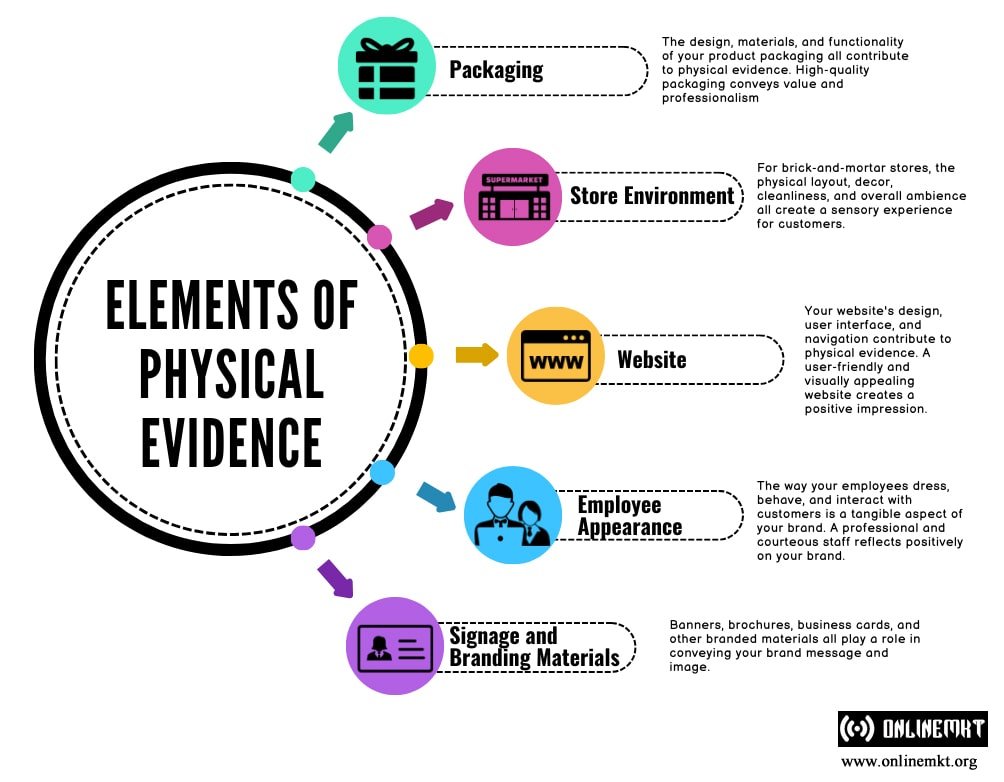
This is the tangible evidence or material indicators which customers utilize in order to assess the product prior to buying it.
Elements of Physical Evidence
Packaging: Your packaging for your product’s design, materials, and features all are part of physical evidence. Proper packaging is a sign of value and professionalism.
Store Environment: In a bricks-and-mortar store, the real layout, interior design, cleanliness, and ambiance all work together to provide customers with a sense experience.
Website Design: Online, your website’s design, user interface, and navigation all contribute to physical evidence. A welcoming, well-designed website makes a good first impression.
Employee Appearance and Demeanor: What your employees wear, how they behave, and how they treat customers is a tangible aspect of your brand. A polite and professional team presents your brand well.
Signage and Branding Materials: Banners, brochures, business cards, and other items featuring your branding all play a part in the delivery of your brand message and image.